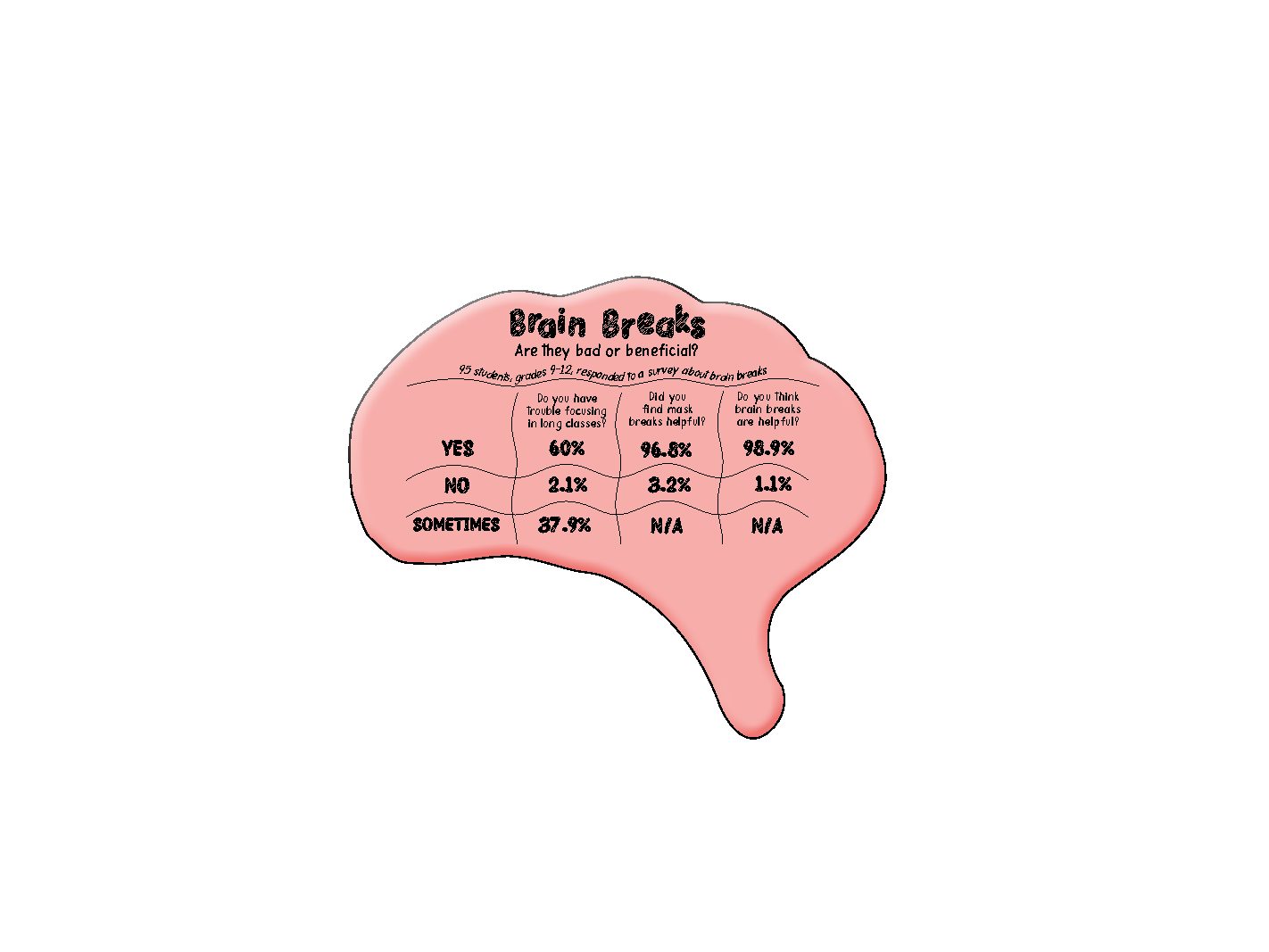Amber Sadiq, Reporter
@asadiqcourant
An all too familiar reality for junior Victoria Novothny begins at 7:30 am sharp. Following the block schedule, every hour and a half, she makes her way from class just to sit at a desk for 85 minutes straight in an all too familiar position.
Since the implementation of block scheduling, there has been much debate between students and teachers on the effectiveness of the schedule. With the recently lifted mask mandate, the need for “mask-breaks” has been deemed unnecessary, and many have expressed their concerns. Victoria said, “with the block periods, we have to sit there for almost 90 minutes with no break, class after class, back to back.”
With the ongoing stress and pressure students face, little to no time to break from class can result in mental exhaustion. “I really wish they did give breaks,” said sophomore Rubina Isfahani. “Sitting for that long and trying to learn is so hard. ” she said. “I was really worried about the amount of time kids would be sitting in one place for a certain amount of time,” said Kristen Woods of the Health and Physical Education Department. “I do think that there needs to be a break in the middle, maybe a little movement and activity. Whether it’s going for a walk or getting up and moving around the classroom” she said.
Before block scheduling was fully adopted the highschool sent groups of teachers to different school districts that had already implemented block scheduling. The purpose was to get their opinion and see a basic idea of how it would be run. “I was already a fan at that point,” said Jennifer Lee of the Math Department. “I was a little upset about not having a whole lot of time to plan for it, but I was pretty happy that we were going to make the change.” she said.
“What a lot of people don’t realize is that it was really overwhelming to meet with all 7 or 8 classes every single day, especially when we were completely remote. It was really difficult” said Ms. Lee. “In a strange way, I think it’s less exhausting. There was something about having to basically change channels almost 7 times a day, whereas now you only have to shift your thinking 3 or 4 times a day” she said.
For many, it can be refreshing to not prepare for as many classes in a day, despite being with the same one for a longer period of time. “Even though there’s only four classes a day it is still very tiring to just sit there and try to focus for an hour and a half,” said Rubina. It’s clear that many find they don’t have a problem with block scheduling itself, just its execution.
The adjustment to block scheduling was one that everyone had to oversee, especially with teachers having to extend their lesson plan to fill the elongated period. “I think a lot of my lessons at the time were kind of self paced for students. They would read and follow directions, do problems and then we’d rush to go over them at the end of the period,” said Ms. Lee. “The whole math department has been working on professional development for how to adjust to block schedules. Part of it was learning how to segment our lessons and how to break things into different parts.” She said, “a lot of it would involve moving into different groups throughout the period, or at least changing into different activities as the time progresses.” said Ms. Lee.
The most concerning consequence with the establishment of block scheduling is student mental exhaustion. How are students supposed to sit through almost an hour straight of learning time without their attention being affected? “Even though there’s only four classes a day it is still very tiring to just sit there and try to focus for an hour and a half,” said Rubina.
Since mask breaks have no longer been mandatory, many teachers have adopted their own versions of breaks for students. Often they are just interpretations of what was already learned, or no break is given breaks. “It really bothers me, I refuse to believe that some teachers can’t take 5 minutes out of an 85 minute class to let our brains breathe,” said Victoria. “I do feel that I’m a lot more focused in classes where a teacher allows us to break in between,” said sophomore Eve Campbell.
Ms. Lee is one teacher that creates interactive, hands-on breaks for her students to participate. “A lot of the brain break activities I’ve chosen have been connection activities in the past, or things that are similar to connections activities. Since we don’t have that, it is kind of a way to get to know my students. The idea is really to get them to relax and get them to take their mind off the work for a couple minutes.” She said, “I do think it is important because everyone has a lot of things weighing on their mind from other classes.” said Ms. Lee.
Although the health and gym classes aren’t greatly affected by the establishment of block scheduling, the practice of Wellness Wednesday does show their stance on the amount of break time students truly need. “Movement is medicine, it makes you feel better to just get up and move a little bit and take a break from the devices,” said Ms. Woods. “Wellness Wednesday was designed midweek for students to take a break from the academic rigor to do things that they enjoy. Whether it’s going for a walk, playing cards, or being physically active. I do believe that it’s really important to just step away from the computers and devices to just do things you enjoy.” she said.
Brain breaks are an opportunity to take a break from class, while also having a moment to just relax without worrying about falling behind. “A five minute break would really help, especially to feel more refreshed for classes,” said Victoria. “The only breaks I really get are passing time and lunch. I feel like that isn’t enough. One during class to just get my brain back together would be so useful” said Rubina. Giving students minutes to collect their thoughts, get everything together, and then go back to class. “I feel like I’d do much better in classes, that I’d listen much better if I felt like teachers were also listening to my needs as well” said Victoria.




